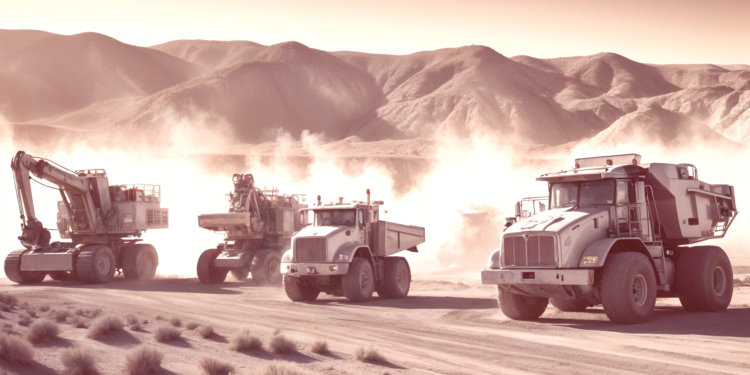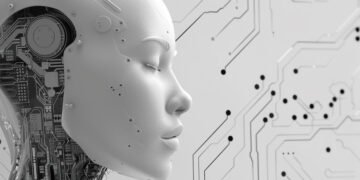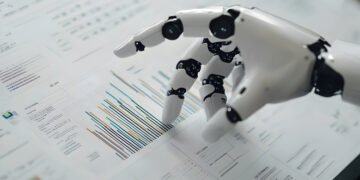The mining industry, traditionally known for its conventional approaches, is undergoing a remarkable transformation through the integration of artificial intelligence. This technological evolution isn’t just about automation – it’s reshaping how mining companies approach efficiency, sustainability, and safety in their operations.
Transforming Operational Efficiency
At the heart of mining’s AI revolution lies a fundamental shift in operational approaches. Mining companies are now leveraging sophisticated data analysis systems to enhance their exploration and production processes. By processing complex geological datasets, these systems can identify patterns and anomalies that might escape human observation, significantly improving the success rate of mineral exploration while reducing associated costs.
One of the most significant developments in this space is the implementation of predictive maintenance systems for mining equipment. These systems continuously monitor the health of crucial machinery, such as haul trucks, enabling companies to detect potential failures before they occur. This proactive approach not only reduces costly downtime but also extends equipment lifespan, representing a significant advancement in asset management.
Autonomous Operations: The New Frontier
The integration of autonomous equipment has emerged as a game-changing development in mining operations. Companies are now deploying self-operating trucks, drills, and trains that can work continuously without fatigue. These autonomous systems optimize routes, manage loads, and ensure precise drilling operations, leading to increased productivity and improved safety conditions.
What makes this development particularly significant is its ability to handle hazardous tasks that traditionally put workers at risk. By removing human operators from dangerous situations, mining companies are making substantial progress in workplace safety while maintaining operational efficiency.
Water Management and Environmental Sustainability
Water management represents another crucial area where AI is making significant inroads. In Chile, for instance, mining operations have successfully reduced their reliance on groundwater by implementing AI-driven desalination systems. These sophisticated systems optimize the desalination process and water recycling, while real-time monitoring helps detect leaks and ensure efficient water distribution.
The environmental impact of this technology extends beyond water management. AI systems are now being used to monitor emissions, water quality, and soil health in real time, helping companies comply with environmental regulations while minimizing their ecological footprint.
Energy Optimization and Renewable Integration
Energy management has become another key focus area for AI implementation in mining. Advanced monitoring systems analyze data from various sensors and machinery to identify inefficiencies and recommend adjustments that reduce energy consumption and greenhouse gas emissions. Some companies have gone further by implementing intelligent grid management systems that balance renewable energy inputs with conventional power sources, helping maintain stable energy supply while reducing carbon footprints.
Challenges and Practical Considerations
Despite these promising developments, the integration of AI in mining faces several practical challenges. As noted by Fernanda Martins, Industry Marketing Director at Aveva, successful AI implementation requires robust data infrastructure and aligned IT and operational systems. Many mining operations still need to strengthen their foundational systems before they can fully leverage AI’s benefits.
The industry also faces a significant skills gap when it comes to implementing and maintaining AI systems. This shortage of qualified personnel can slow down the adoption of new technologies and limit their effectiveness once implemented.
Infrastructure Integration
One of the most significant challenges lies in integrating new AI systems with existing infrastructure. Mining operations often rely on legacy systems that may not easily connect with modern AI solutions. This integration challenge requires substantial investment in both infrastructure and training, making the transition to AI-enabled operations a gradual process rather than an immediate transformation.
Choosing the Right Solutions
In the current market, where AI solutions abound, mining companies must be selective in their technology adoption. While large generative AI models might grab headlines, smaller, specialized predictive systems using real-time operational data often prove more valuable for mining operations. This reality underscores the importance of running pilot programs and carefully evaluating AI solutions before making major investments.
Looking Ahead
The future of mining increasingly points toward greater AI integration, but this evolution requires a balanced approach. Companies must weigh the benefits of AI adoption against practical considerations like infrastructure requirements, training needs, and implementation costs. However, the potential benefits – including improved safety, increased efficiency, and reduced environmental impact – make this technological transition not just desirable but necessary for the industry’s future.
As mining companies continue to embrace AI solutions, the industry is likely to see further improvements in operational efficiency, safety standards, and environmental protection. This transformation represents not just a technological upgrade but a fundamental shift in how mining operations are conceived and executed, pointing toward a more sustainable and efficient future for the industry.
The success of AI in mining will ultimately depend on how well companies can address implementation challenges while maintaining focus on their core operational goals. As the industry continues to evolve, those who can successfully navigate this technological transition while addressing practical challenges will likely emerge as leaders in the new era of smart mining.
Acknowledgment: This article was written with the help of AI, which also assisted in research, drafting, editing, and formatting this current version.







